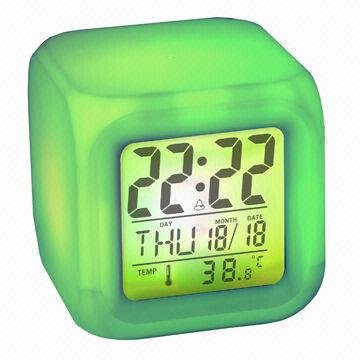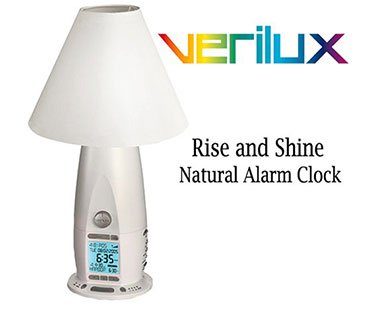

The dawn simulator was thus to function as their alarm clock on workdays, and they were also instructed to use it in the same way, and set for the same time, at weekends. Finally, they were asked to stick to the preferred level and use it daily throughout the trial. They were asked to set it at 200 lx for the first morning, but allowed to change it to either 100 or 300 lx for the second.
#NATURAL LIGHT ALARM CLOCK TRIAL#
The trial was preceded by two days of adaptation during which subjects were instructed to use the dawn simulator and adjust the maximum level of illuminance. After that, the lamp could be switched off. With the dawn simulator the luminance is weak (<1 lux) initially but intensifies following a linear ramp, reaching highest level in 30 minutes. There were no bed partners in the study subjects. The assistant checked 1) that the bedrooms could be darkened (<1 lux), 2) that the dawn simulator could be placed on a bedside table, or equivalent, on the subject's side of the bed, at eye level, 3) that the distance to subject's eyes (approximately 30 cm) and illuminance were same in all bedrooms. Research assistant provided the study subjects with the dawn simulator and visited each subject's bedroom to ensure the correct usage of the apparatus. The dawn simulators used were 'Light wake-up system' prototypes (Philips DAP), in which the light source was placed behind a diffuser. The study protocol is in concordance with the Helsinki declaration and its amendments, and it was approved by the local ethics committee. This trial was part of a larger, binational study whose report is currently under preparation. The first 100 eligible respondents to the invitation letter were enrolled in the trial, after giving their written informed consent.

Subjects who were not shift workers and who had not been hospitalised nor taking medication during the previous six months were eligible for the study. No reference to sleeping problems and/or seasonal changes in mood was made in the recruitment letter. The study procedure was briefly described in the invitation letter. These one thousand subjects were sent a letter inviting them to take part in a trial focusing on the effects of dawn simulation on sleep. We present, to our knowledge, the first study on the effect of dawn simulation on sleep on a non-clinical population.Ī random sample, comprising of 1000 subjects aged over 17 years, with 1:1 sex ratio, was drawn from the national population register of Finland. ĭawn-dusk simulation has been successfully used to treat disturbed circadian rest-activity cycles in patients with dementia.


In an earlier report, a slower light ramp (increasing illuminance over 45 min, peaking at 100 lux) was better than rapidly increasing illuminance (4 s, peaking at 100 lux) in improving mood and quality of sleep in subjects with subsyndromal-SAD. found that dawn simulation was superior to placebo in alleviating symptoms of SAD. In a recently published controlled trial Avery et al. Bright light (over 2500 lux) is considered the treatment of choice in winter-SAD, and more effective than dawn simulation. Seasonal Affective Disorder (SAD) is a form of recurring affective disorder, in which a depressive episode usually begins in autumn/winter and remission follows in spring/summer (winter-SAD). It might keep the endogenous clock in a desired phase position relative to standard clock time, preventing desynchronization, facilitating sleep and improving the process of waking up. We hypothesised that to a number of people simulated dawn would be of some help during winter in particular. During winter it is thus possible that the biological clockwork becomes less stable due to lower light intensity and shorter photoperiod. Light is the most important Zeitgeber, or time-giver in humans. They are generated by inherited time-keeping mechanisms and entrained by signals from the individual's natural habitat to match the solar day and transitions between diurnal and nocturnal states. Intrinsic biological rhythms allow living organisms to anticipate and adapt to environmental changes.


 0 kommentar(er)
0 kommentar(er)
